My grandpa, agile with his hands more for framing barns than fine cabinetry, built one of the most memorable presents of my entire early youth: a postage stamp-size greenhouse. Heated with a pair of hanging red lamps, parked beside the farm truck and the garage, my greenhouse further enflamed my plant addiction. Most of my crops consisted of select annuals that the local growers wouldn't grow. Over the years — and eventually in a much-upgraded greenhouse — I had the chance to test a medley of little-known seasonal beauties. Of them all, here are seven that became favorites.
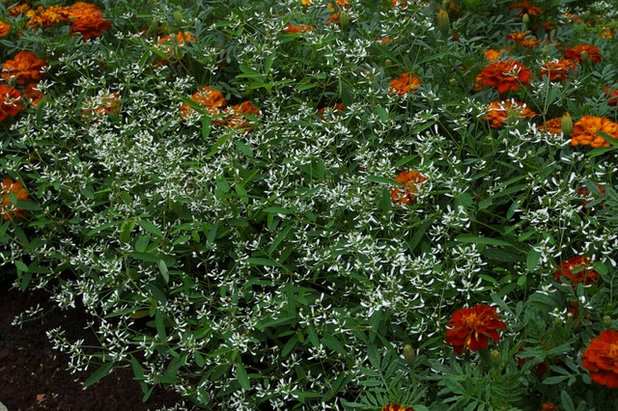
CYAN Horticulture
Euphorbia 'Diamond Frost'(Same botanical name)It would be a stretch to claim that
Euphorbia 'Diamond Frost' is anything rare and elusive. I think, however, that it is underutilized. Introduced about 10 years ago by giants of the horticultural industry, this deceptively discreet tender plant isn't much to look at on nursery shelves. Laced among showier annuals, though, it enlivens any and all compositions, like baby's breath among cut roses. A little bit of faith is all gardeners need to ensure its success.
USDA zones: Tender
Water requirement: Well-drained to moist soil
Light requirement: Full sun to dappled shade
Mature size: 1 foot tall and wide
Seasonal interest: Summer to fall
When to plant: Spring
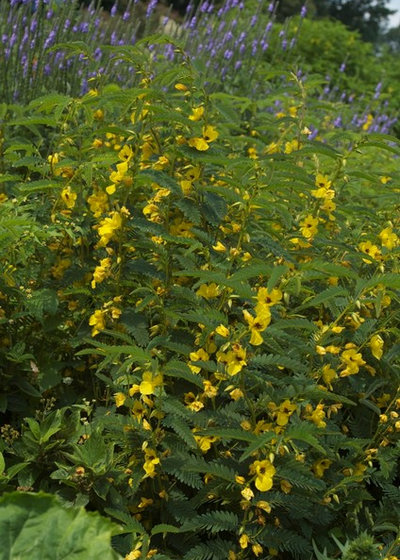
CYAN Horticulture
Partridge Pea(Cassia fasciculata)Truly uncommon is the charming sun-loving legume called Partridge Pea
(Cassia fasciculata). Better known to farmers and restoration biologists, it nonetheless does a great job in beds and borders, as shown here at the Montreal Botanical Garden. I have also seen it used on a sandy beach to great effect. About 3 feet high, it blooms all summer.
USDA zones: N/A
Water requirement: Well-drained to dry soil
Light requirement: Full sun
Mature size: 3 1/4 feet tall and 2 1/2 feet wide
Seasonal interest: Summer to fall
When to plant: Spring
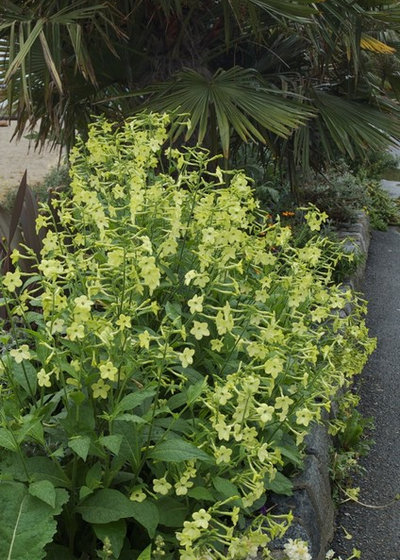
CYAN Horticulture
Flowering Tobacco(
Nicotiana spp and cvs)
Flowering tobacco (
Nicotiana spp and cvs) has been a staple of spring annual sales for decades. Unfortunately, modern breeders have turned these elegant and fragrant heirlooms into short and graceless cookie cutter products. Thankfully, some speciality seed houses and growers still offer the better ones.
N. langdorfii,
N. mutabilis,
N. sylvestris and the like are all excellent choices.
USDA zones: N/A
Water requirement: Well-drained to moist soil
Light requirement: Full sun to dappled shade
Mature size: Varies
Seasonal interest: Summer to fall
When to plant: Spring
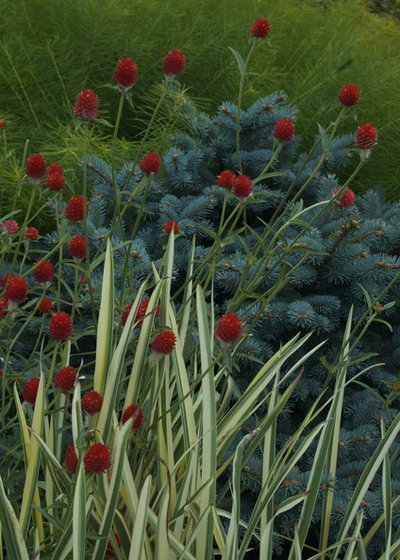
CYAN Horticulture
Globe Amaranth(
Gomphrena haageana 'Strawberry Fields')
A similar issue affects most globe amaranths: They are so short and dense that they are impossible to weave into any composition. Not so much with
Gomphrena haageana 'Strawberry Fields', a taller, more relaxed globe amaranth that sports an endless succession of bright red inflorescences. In full sun and a well-drained location, it poses no problem at all.
USDA zones: N/A
Water requirement: Well-drained soil
Light requirement: Full sun
Mature size: 1 2/3 feet tall and 1 foot wide
Seasonal interest: Summer to fall
When to plant: Spring
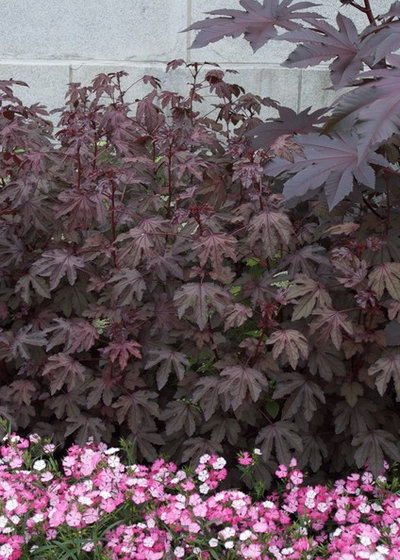
CYAN Horticulture
Red-Leaf Hibiscus(
Hibiscus acetosella 'Red Shield')
As misleading as it is impactful, red-leaf hibiscus (
Hibiscus acetosella 'Red Shield') has traded the usual dinner-plate-size flowers for saturated burgundy foliage. It's a vigorous grower; the small cutting purchased in the spring will rapidly turn into a stately shrub. I find it especially useful for filling those gaps left by juvenile perennials and shrubs.
USDA zones: Tender
Water requirement: Moist soil
Light requirement: Full sun
Mature size: 3 1/4 feet tall and wide
Seasonal interest: Spring to fall
When to plant: Spring
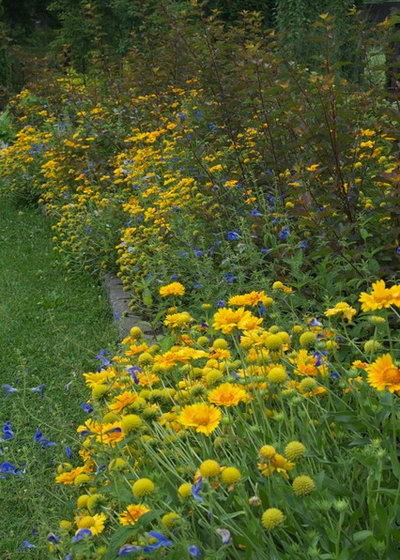
CYAN Horticulture
Gentian Sage(Salvia patens)True blue is a much-sought-after color in the garden, and very few other plants can match sages on this wedge of the chromatic circle. Of the dozens of species available, the somewhat tender
Salvia patens always wins my heart. The rivalry between the sky-blue 'Cambridge Blue' and the dark blue 'Oxford Blue' is settled only by personal preference (I favor the latter).
USDA zones: 8 to 10 (find your zone)
Water requirement: Well-drained to moist soil
Light requirement: Full sun
Mature size: 1 2/3 feet tall and 1 1/3 feet wide
Seasonal interest: Summer to fall
When to plant: Spring to summer
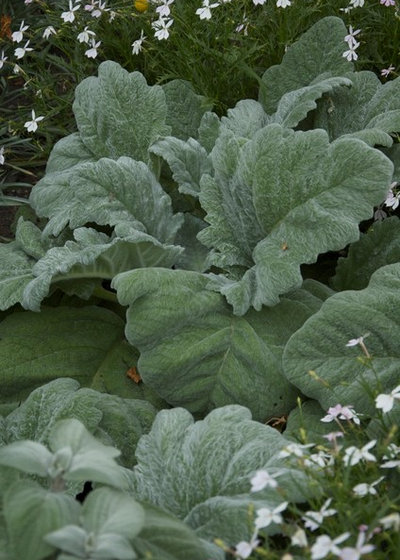
CYAN Horticulture
Silver Sage(Salvia argentea)Another sage, eons from the preceding one, is famed for its large white woolly leaves. As a biennial, it first hugs the ground and, if left to overwinter, then skyrockets into a candelabra of average white flowers. I personally replace it every year. Such an alien-looking plant sure makes for a refreshing antidote to the oh-so-common stiff marigold and sticky petunia.
USDA zones: 4 to 8
Water requirement: Well-drained to dry soil
Light requirement: Full sun
Mature size: 1 foot tall and 2 1/2 feet wide
Seasonal interest: Spring to fall
When to plant: Spring to summer





